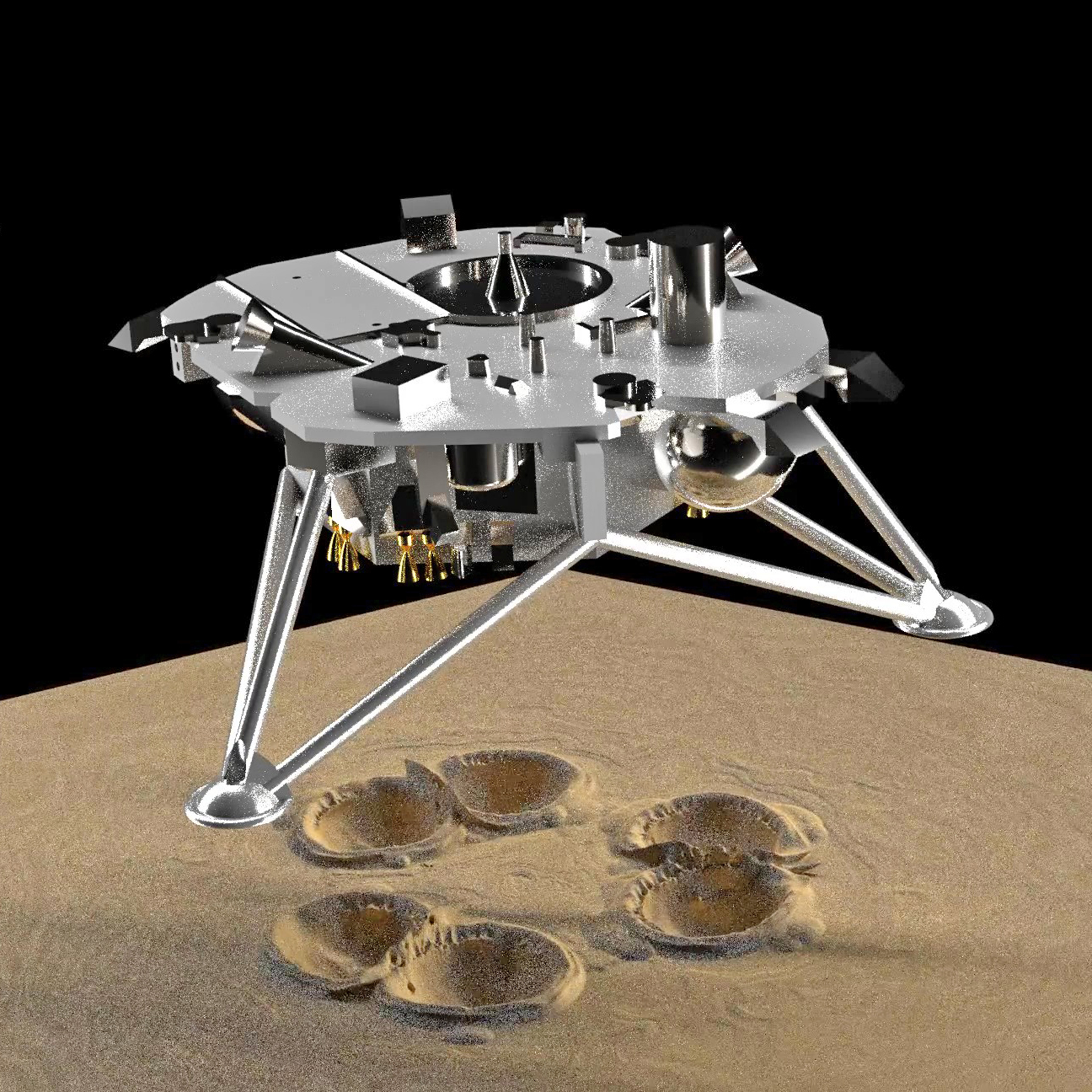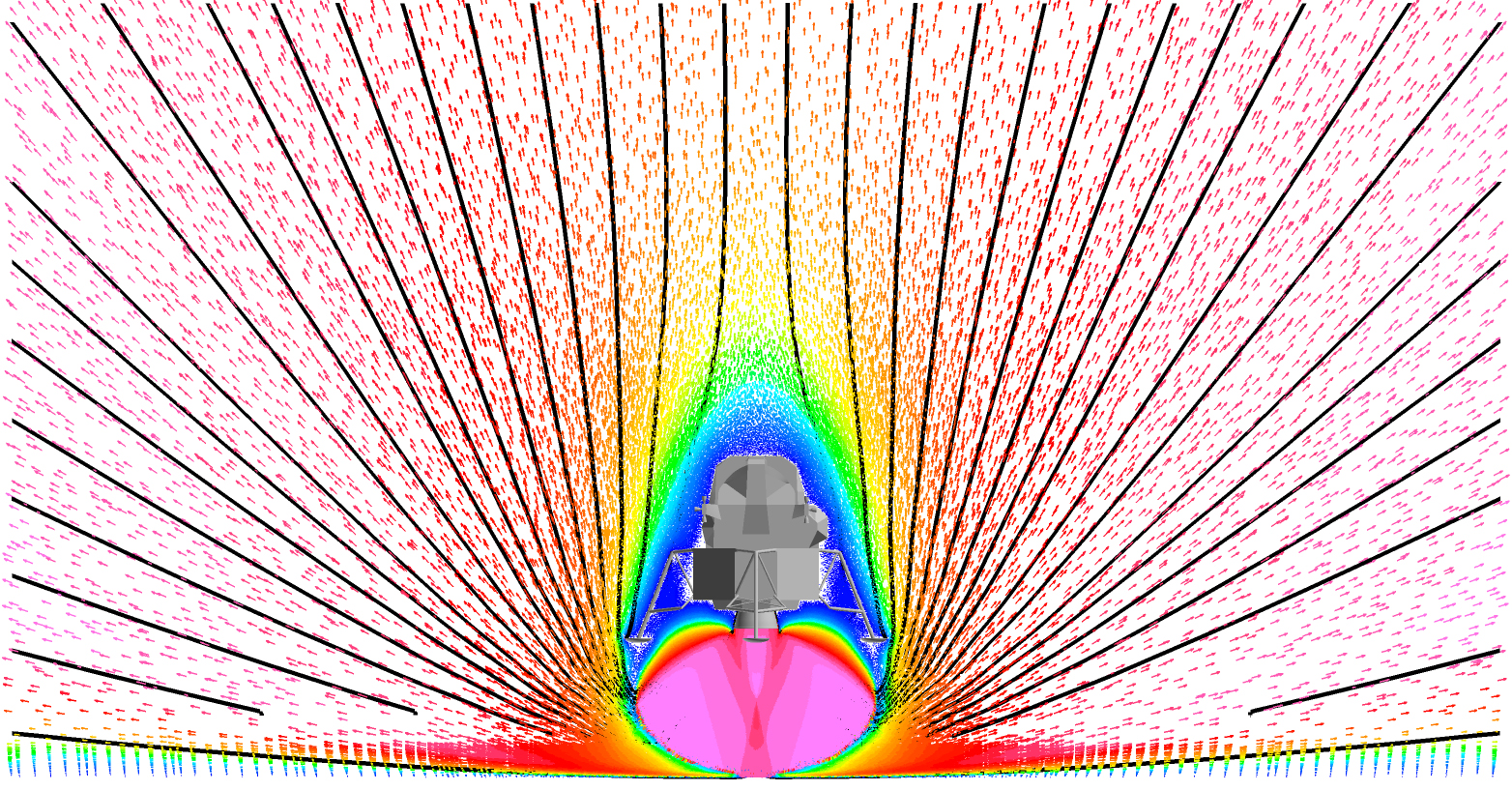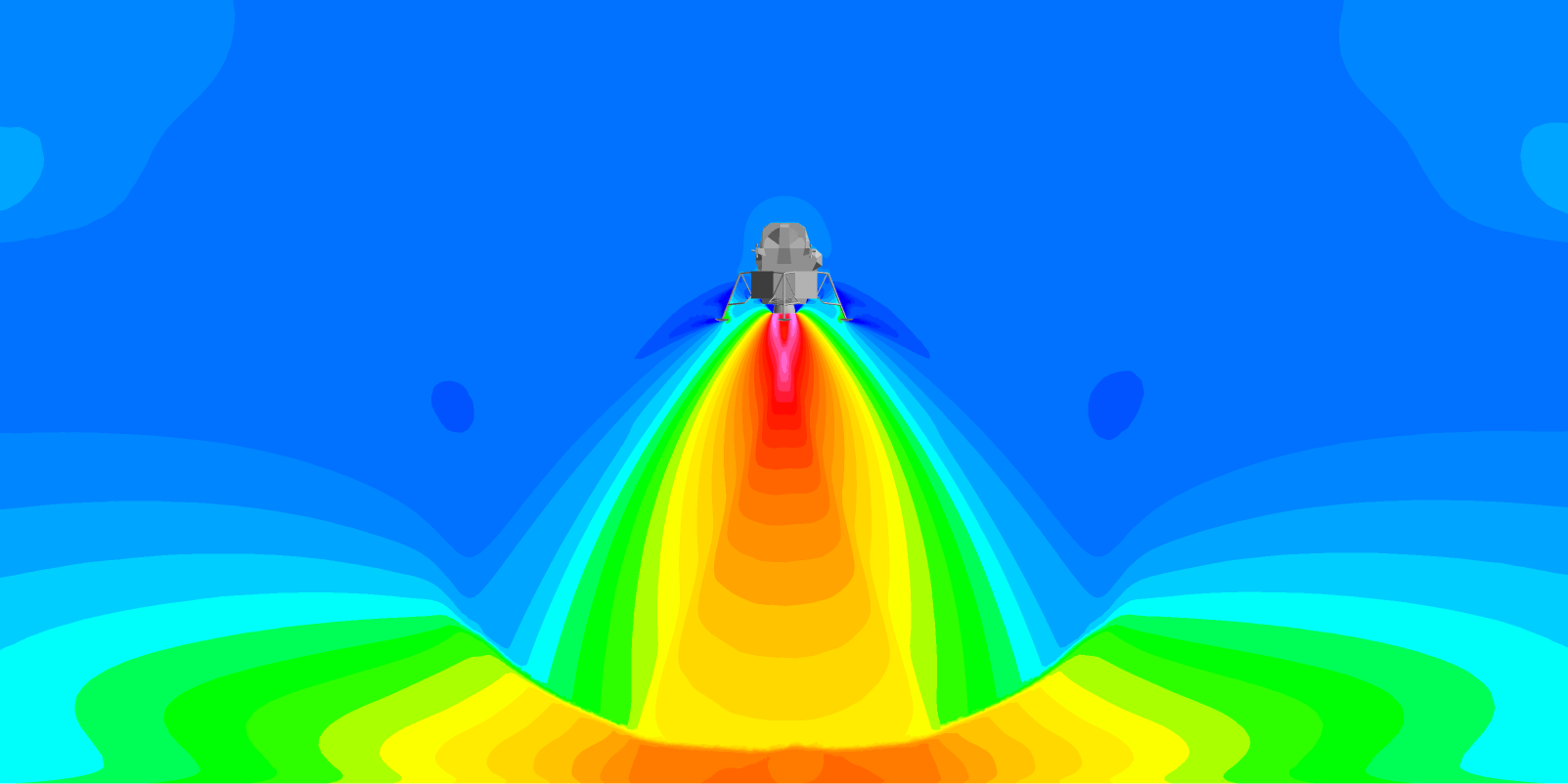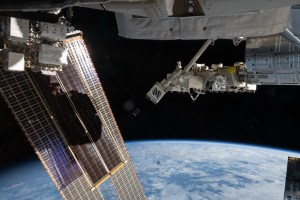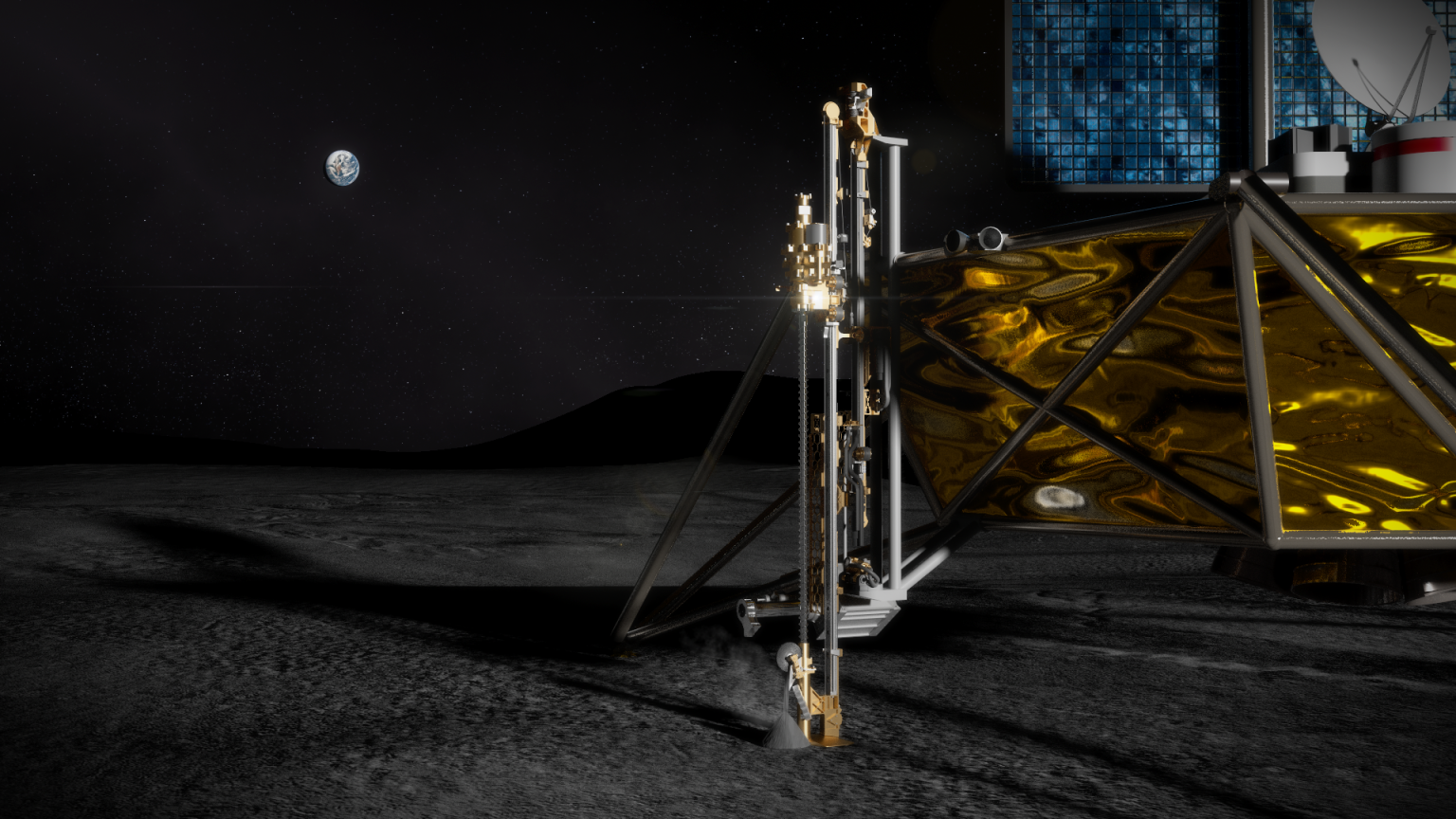NASA is advancing technology to help identify how rocket plumes interact with lunar and other planetary regolith upon touchdown to ensure safe landings for future exploration missions.
The Plume-Surface Interaction (PSI) Project is advancing both modeling and testing capabilities to understand exactly how rocket exhaust plumes affect a planetary landing site. This advanced modeling will help engineers evaluate the risks of various plumes on planetary surfaces, which will help them more accurately design landers for particular locations.
Safe and efficient landings often require the use of rocket engines to decelerate the landers to a soft touchdown on the surface. When the rocket plume of a lander interacts with planetary regolith, the landing site can be affected in several ways. The plume exhaust can erode the planetary surface, which can destabilize the lander. Another danger landers face is surface particles that are ejected from the area. These tiny particles can find their way inside a lander and damage important instrumentation and obscure visibility for radar and other optical ranging systems. Better understanding these types of risks will help engineers design landers to accommodate potentially risky situations.
How PSI Models Will Increase the Safety of Future Planetary Touchdowns
The PSI project is advancing predictive modeling and simulation capabilities to understand the physics associated with the exhaust plume, erosion, and ejected particles from a landing site. This capability to simulate how a plume will affect a landing site will help engineers protect landers by more accurately evaluating the risks of targeted landing sites. With a better understanding of various landing sites, engineers will be able to tailor lander designs for particular sites, which will limit overdesigning and reduce building costs.
The team will run three different ground tests with supersonic rocket exhaust plumes and regolith simulants to capture data on PSI effects. The tests will include a cold-flow test and a hot-fire test both in a 15-foot vacuum chamber. Additionally, the team will test a human-scale oxygen-methane engine and regolith simulant in the Plum Brook Station vacuum facility at NASA’s Glenn Research Center in Cleveland. This testing will significantly expand the data available to validate computational modeling, construct engineering models, and develop instrumentation related to plume surface interaction.
Additionally, the PSI team will develop and test a prototype compact radar, which will provide data on particles ejected from the landing site. The team will also use a camera system, called SCALPSS, to provide stereo imagery of crater formation during testing. SCALPSS will fly to the Moon on Intuitive Machines’ lunar lander in late 2021. The data will ultimately help engineers understand how to design safer landers.
The PSI project is managed by team members located at NASA’s Marshall Space Flight Center in Huntsville, Alabama, NASA’s Kennedy Space Center in Cape Canaveral, Fla, NASA’s Langley Research Center in Hampton, Virginia and NASA’s Jet Propulsion Laboratory in Southern California. With technical contributions from these centers, PSI could significantly reduce risks for current and future exploration landers. This includes Human Landing Systems and Commercial Lunar Payload Services for the Moon and the Sample Retrieval Lander and Mars Ascent Vehicle for Mars Sample Return, as well as vehicles supporting human exploration of the surface of Mars.
Partners:
- PSI is working with universities on gas-particle interaction modeling, which will assist in accurately modeling ejected particles, dust and erosion under the lander. University partners under PSI include Johns Hopkins University, University of Central Florida, University of Michigan and University of California Davis.
- The PSI team will use the SCALPSS camera system during ground testing to provide stereo imagery of plume effects on a regular simulant test site.



























